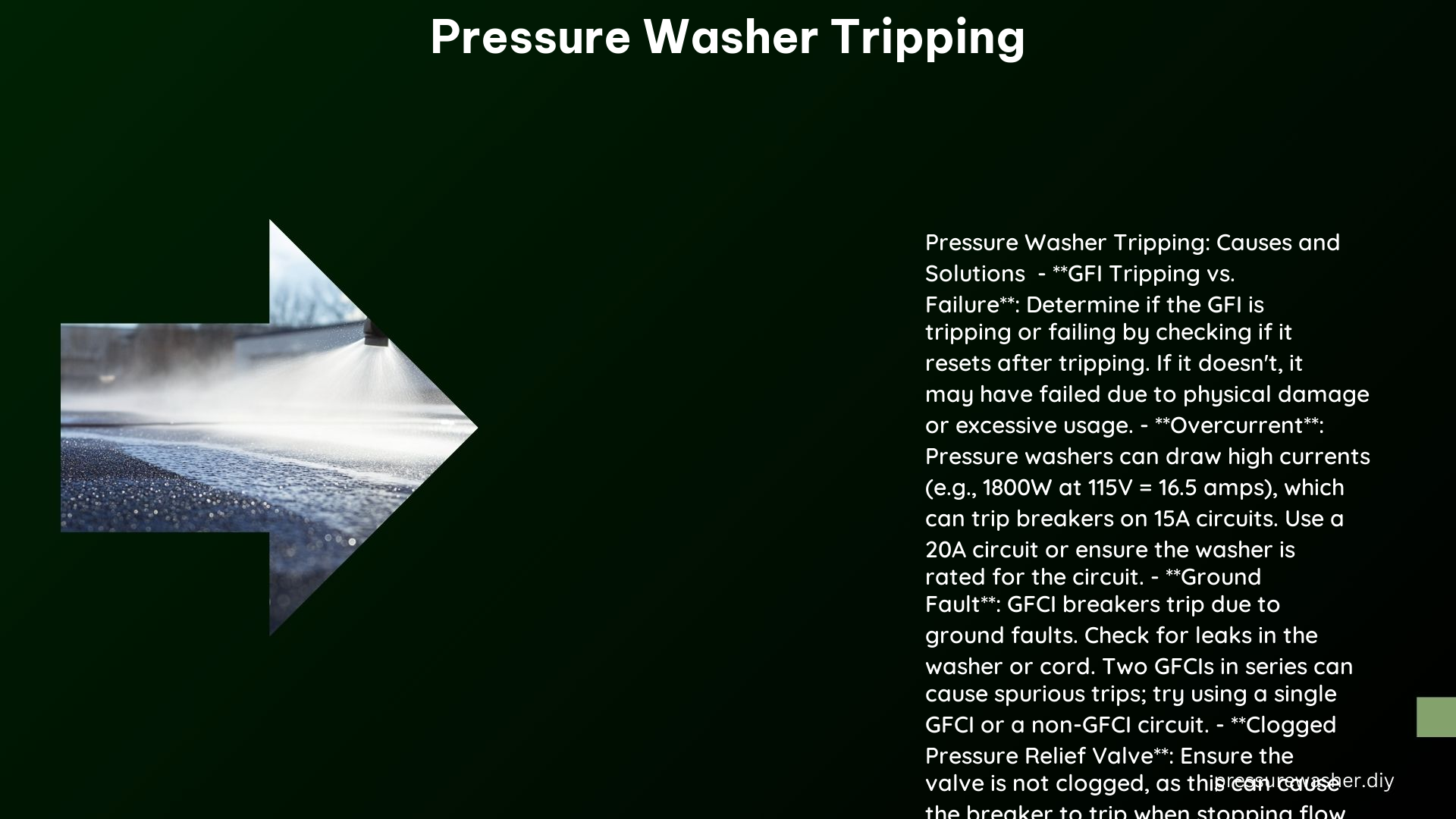Pressure washers are powerful cleaning tools that can make quick work of tough grime and dirt, but they can also be prone to tripping circuit breakers. Understanding the common causes of pressure washer tripping and implementing the right solutions can help ensure smooth and uninterrupted operation.
Causes of Pressure Washer Tripping
1. Overcurrent
Pressure washers can draw high currents, especially during startup. If the electrical circuit is not rated to handle the initial surge, it can cause the breaker to trip. For example, a 1900W pressure washer can draw up to 16.5 amps, which is more than the 15 amps typically provided by a standard household circuit. Using a pressure washer on a circuit with a lower amperage rating than the washer’s requirements can lead to tripping.
Technical Specifications:
– A 1900W pressure washer requires a 16.5A circuit to operate safely without tripping the breaker.
– The initial startup current for a pressure washer can be up to 30% higher than the running current, further increasing the risk of tripping a lower-rated circuit.
– Breakers are typically rated for 80% of their maximum capacity, so a 15A breaker should only be used for loads up to 12A to avoid nuisance tripping.
2. Ground Fault
A ground fault occurs when there is an unintended path of electricity to ground, which can be caused by a faulty pressure washer or a problem in the electrical system. GFCI (Ground Fault Circuit Interrupter) devices are designed to detect and interrupt such faults to prevent electrical shock, but a malfunctioning GFCI can also lead to tripping.
Technical Specifications:
– GFCI devices are required for outdoor electrical equipment, including pressure washers, to provide protection against electric shock hazards.
– GFCI devices are designed to trip when they detect a ground fault current of as little as 5 milliamps (mA), which is well below the level that can cause harm to a person.
– A faulty GFCI device may trip at lower fault currents or fail to trip when a ground fault is present, leading to nuisance tripping or a lack of protection.
3. GFCI Issues
In addition to a faulty GFCI device, other GFCI-related issues can also cause pressure washer tripping. If the GFCI is not functioning properly, it may trip unnecessarily or fail to trip when there is a ground fault.
Technical Specifications:
– GFCI devices have a limited lifespan and can degrade over time, leading to decreased sensitivity or malfunctioning.
– Improper installation, such as using a GFCI device that is not rated for the pressure washer’s power requirements, can also cause tripping issues.
– Environmental factors, such as moisture or physical damage, can affect the performance of GFCI devices and lead to tripping problems.
4. Multiple GFCI Devices
Having multiple GFCI devices connected in series can cause tripping issues. This is because each GFCI device can detect the current flowing through the other, leading to false trips.
Technical Specifications:
– GFCI devices work by measuring the current flowing in the hot and neutral conductors. If there is a difference in these currents, indicating a ground fault, the GFCI will trip.
– When multiple GFCI devices are connected in series, the current flowing through one GFCI can be detected by the other, causing it to trip even in the absence of a true ground fault.
– The recommended practice is to use a single GFCI device or connect the pressure washer to a circuit with no additional GFCI protection to avoid this issue.
Solutions

-
Use a Suitable Circuit: Ensure the pressure washer is connected to a circuit with a sufficient amperage rating to handle its power requirements. This may involve upgrading the circuit or using a dedicated circuit for the pressure washer.
-
Check the Pressure Washer: Inspect the pressure washer for any signs of damage or wear that could be causing a ground fault, such as frayed or damaged cords, loose connections, or water ingress.
-
Replace Faulty GFCI Devices: If the GFCI device is faulty, replace it with a new one that is rated for the pressure washer’s power requirements. Ensure the GFCI is properly installed and functioning correctly.
-
Avoid Multiple GFCI Devices: Try to avoid chaining multiple GFCI devices together. Instead, use a single GFCI device or connect the pressure washer to a circuit with no additional GFCI protection.
-
Consult a Professional: If the issue persists after trying the above solutions, consider consulting an electrician to diagnose and fix any underlying electrical issues, such as wiring problems or circuit capacity limitations.
By understanding the common causes of pressure washer tripping and implementing the appropriate solutions, you can ensure your pressure washer operates reliably and without interruption.
